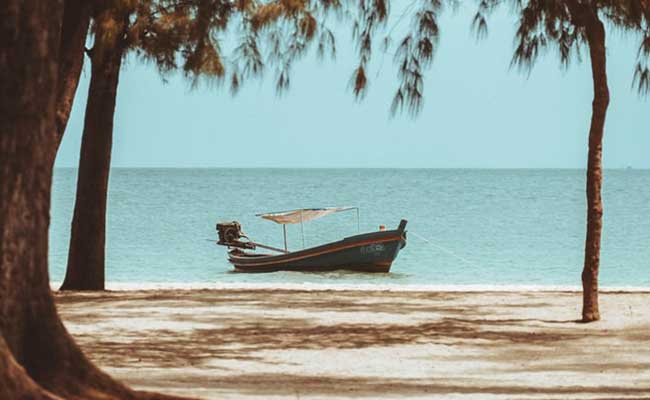Following on from Thai lesson 1, where I gave you a set of useful phrases for traveling in Thailand, we are going to focus on asking for directions and how to say the names of specific places.
Remember to keep putting the polite “Khrup” (sometimes sounds more like “cup”) for a man, and “ka” (sounds like “kar”) for a woman at the end of your sentences.
For example: “Khun ja pai nai khrup/ka” (where are you going?).
As foreign speakers, this is extremely important, not just because it's polite but because it shows we are being respectful of the language and learning to speak Thai in a formal, proper manner.
Note that Thai people often shorten sentences, rarely saying all the words. For example: “Khun ja pai nai khrup” may become “Pai nai khrup”.
As a foreigner, however, it is better that you get used to forming the whole sentence first, and then once your pronunciation and understanding of the language gets better, you can begin speaking in a more colloquial way. You should still use “khrup/ka”, though.
One more note for this lesson, and something a few readers have mentioned, is that Thais often put “na” in front of ‘khrup' and ‘ka'. For example, “Khop khun mak na khrup” (thank you very much).
“Na” is what I like to call a sentence sweetener. It is a way of expressing oneself in a somewhat more sincere way. Careful though, as overdoing its usage can comes across as a little false.
You don't need to worry about using ‘na' at this stage, but I thought I'd point it out as you're bound to come across this soon.

Photo credit: Eirik Uhlen
Useful Directions to Know In Thai:
Notes: Male speakers use Phom (“I”), and female speakers use “Chan”. Male speakers use “khrup” at the end of a sentence, and female speakers use “ka”.
1. I want to go to Siam Paragon
Phom dong gan pai Siam Paragon Khrup/ka/ – ผมต้องการไปสยามพาราก้อนครับ/ ค่ะ
2. How do I get to the Grand Palace?
Phom ja pai Wat Pra Keow dai yang rai khrup/ka / – ผมจะไปวัดพระแก้วได้อย่างไรครับ/ คะ
3. Where is the post office?
Prai-sanee yu thi nai khrup/ka / – ไปรษณีย์อยู่ที่ไหนครับ/ คะ
4. Where is the toilet?
Hong nam yu thi nai khrup/ka / – ห้องน้ำอยู่ที่ไหนครับ/คะ
5. How far is the beach from here?
Chai we la gee nathi pai talay khrup/ka / – ใช้เวลากี่นาทีไปทะเลครับ/ คะ
6. Can I walk, or do I need to take a taxi?
Phom sa mert dern pai, ruu, chai lot taxi khrup/ka? /- ผมสามารถเดินไปหรือใช้รถแท็กซี่ครับ/ คะ
7. Turn left
Leiyo sai khrup/ka / – เลี้ยวซ้ายครับ/ค่ะ
8. Turn right
Leyio kwaa (khrup/ka) / – เลี้ยวขวาครับ/ค่ะ
9. Keep going straight ahead
Drong pai ruay ruay khrup/ka / – ตรงไปเรื่อยเรื่อยครับ / ค่ะ
10. Please stop here
Jod tee nee khrup/ka / – จอดที่นี่ครับ/ค่ะ
11. Please slow down
Ga-ru-na cha cha noi khrup/ka / – กรุณาช้าช้าหน่อยครับ/ค่ะ
12. Please turn around
Ga-ru-na han lang glap duai khrup/ka / – กรุณาหันหลังกลับด้วยครับ/ค่ะ
13. Please reverse
Ga-ru-na toy lang khrup/ka / – กรุณาถอยหลังครับ/ค่ะ
14. Be careful!
Ra wang khrup/ka / – ระวังครับ/ค่ะ
15. Please pick me up at 7 pm
Ga-ru-na ma rub phom, neung thum drong khrup/ka / – กรุณามารับผมหนึ่งทุ่ม ตรงครับ/ค่ะ
Useful Places to Know In Thai:
1. Airport
Sanam bin / สนามบิน
2. Bus station
Sa-tanee rot bus / สถานีรถบัส
3. Railway station
Sa-tanee rot fai / สถานีรถไฟ
4. Police station
Sa-tanee tum ruad / สถานีตำรวจ
5. Hotel
Rong raem / โรงแรม
6. Embassy
Sa-tan thut / สถานทูต
7. Hospital
Rong payabaan / โรงพยาบาล
8. Post office
Prai-sanee / ไปรษณีย์
9. Market
Dtalad / ตลาด
10. Cinema
Rong nang / โรงหนัง
11. Shopping centre
Hang sappa sinka / ห้างสรรพสินค้า
12. Beach
Talay / ทะเล
13. Restaurant
Raan ahaan / ร้านอาหาร
14. Swimming Pool
Sra wai nam / สระว่ายน้ำ
15. Gym
Hong ork gam lang gai / ห้องออกกำลังกาย (Thai people often just say “fitness”, with less emphasis on the “ss” than we would put.
Helpful Advice
I have tried to translate the Thai script using the English alphabet as closely as I can to the sound of the Thai words (transliteration). Transliteration is a type of conversion of a text from one script to another that involves swapping letters in predictable ways.
You will come across slightly different ways of spelling words, either written by teachers or in books. It really doesn't matter too much about the spelling, only that the word is very close to how it should sound in Thai and that you understand what is being said.
As one of my regular readers pointed out in the comments section of Thai Talk lesson 1, there are 5 tones in the Thai language that assist in defining the meaning of a word, separating it from other similarly pronounced words.
There are 5 tones to learn, and if you can't read Thai script yet you won't properly understand how these tones affect the sound of the word.
But don't worry for now. Just follow the Thai speaker in the videos I have provided and get used to pronouncing the words like a native speaker.
Once you start writing Thai script, everything will come together in a a series of many ‘lightbulb moments'.
The best advice I can give you is to get out there and start practicing the phrases and words from the lessons I have given so far. And as I always say, Thai people will be more than happy to help you perfect the tone and sound of the phrase/word you are trying to say.
If you haven't done so already, register a free account with ThaiPod101 for some great free audio and video lessons you can learn on the fly.